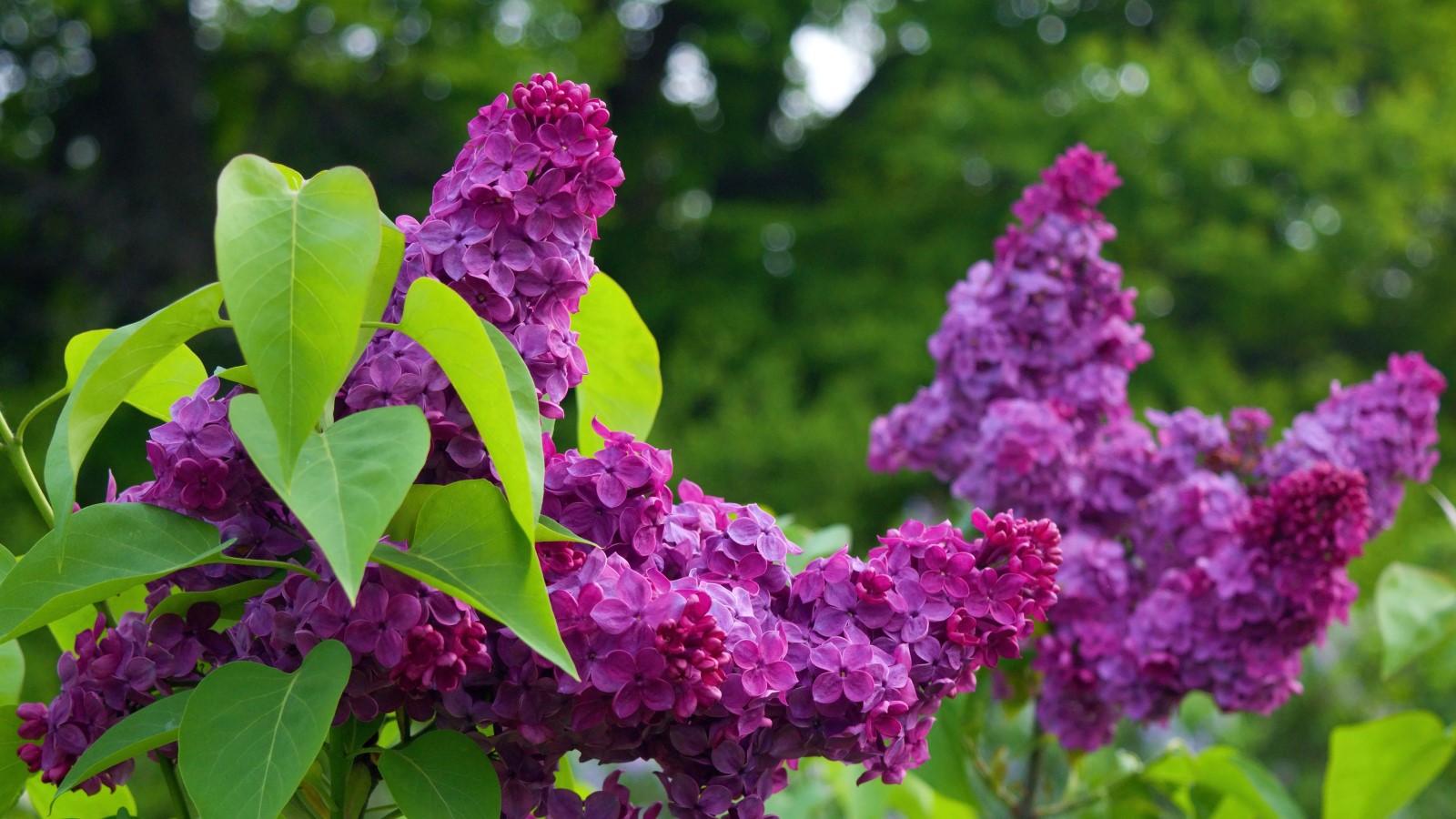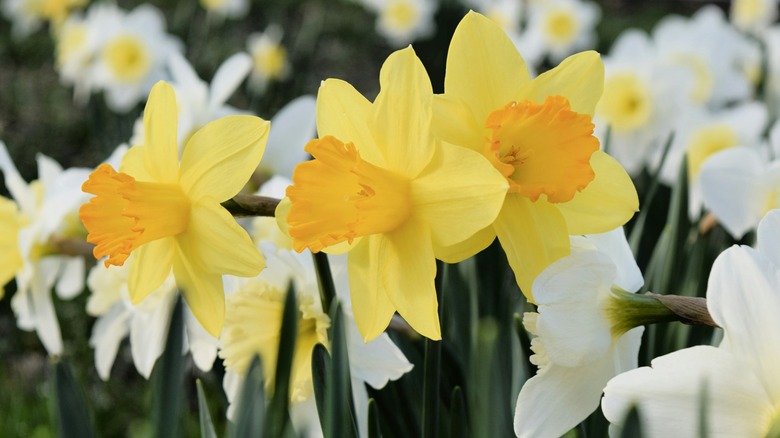Lilacs, also known as Syringa vulgaris, are deciduous shrubs that add a vibrant splash of purple to landscapes in colder climates. There are many climbers, creepers, herbs, shrubs, and trees that make excellent companions for this species. They thrive in similar conditions and many flower at opportune times alongside growing lilacs. These plants tolerate some shade but prefer full sun throughout the day and well-draining humus-rich soil. USDA growing zones 3 to 7 are ideal for them to flourish and bloom, and you can expect their flowers from late April to early June.
Lilac petals range from white to different shades of purple, and theyre known for being just as fragrant as they are beautiful, making them great front liners in ornamental flower gardens. Below are 21 plant species that prefer climates and conditions similar to this deciduous shrub. Each species complements lilacs aesthetically without competing for nutrients and sunlight.
As a passionate gardener, I’ve discovered that while lilacs are stunning on their own with their fragrant blooms, they can become even more spectacular when paired with the right companion plants. Today, I’m gonna share my experience and knowledge about what to plant with lilacs to create a garden that blooms beautifully throughout the season.
Why Consider Companion Plants for Lilacs?
Here’s the thing – lilacs are like that one-hit wonder from the 80s They give us an amazing show for about 2-3 weeks in spring, then they kinda just… stand there That’s why we need to think about companion planting! It helps
- Extend the blooming season in your garden
- Create visual interest when lilacs aren’t blooming
- Maximize garden space
- Support beneficial insects and pollinators
- Hide the “bare legs” of mature lilac bushes
Best Companion Plants for Lilacs
1. Clematis
This is probably my favorite lilac companion! Clematis vines are like the perfect roommate for lilacs because:
- They can climb up the lilac without causing damage
- Come in various colors that complement lilac blooms
- Provide extended flowering season
- Don’t compete for nutrients
2. Peonies
I’ve found that peonies are absolutely gorgeous when planted near lilacs because:
- They bloom right after lilacs finish
- Share similar growing conditions
- Create a classic cottage garden look
- Both are super fragrant (hello, garden paradise!)
3. Spring Bulbs
Okay y’all need to try these combos
- Daffodils
- Tulips
- Grape hyacinths
- Regular hyacinths
These guys pop up before the lilacs bloom, giving you that early spring color we’re all desperate for after winter!
4. Ground Covers
For under your lilacs, try
- Creeping phlox
- Lady’s mantle
- Catmint
- Forget-me-nots
Planting Tips for Lilac Companions
When I’m planning my lilac garden beds, I always keep these tips in mind:
-
Sun Requirements
- Most companions should tolerate full sun
- Some shade-lovers can go under mature lilacs
-
Soil Conditions
- Well-draining soil is a must
- Slightly alkaline soil (pH 6.5-7.0)
- Avoid super moisture-loving plants
-
Spacing
- Give lilacs room to grow (they get big!)
- Plant taller companions behind
- Low-growing plants in front
Seasonal Planting Guide
To keep your garden looking fab all year, here’s my go-to planting schedule:
Spring:
- Early bulbs
- Peonies
- Columbine
Summer:
- Clematis
- Daylilies
- Catmint
Fall:
- Sedum ‘Autumn Joy’
- Ornamental grasses
- Late-blooming perennials
What NOT to Plant with Lilacs
Trust me, I learned these the hard way! Avoid:
- Acid-loving plants (azaleas, rhododendrons)
- Heavy feeders that’ll compete for nutrients
- Plants that need lots of water
- Aggressive spreaders that might overtake the area
Maintenance Tips
Here’s what’s worked for me:
-
Pruning:
- Trim lilacs right after flowering
- Cut back companion plants as needed
- Remove dead or crossing branches
-
Watering:
- Water deeply but infrequently
- Most companions should have similar water needs
- Avoid overwatering
-
Fertilizing:
- Go easy on the fertilizer
- Spring feeding is usually enough
- Use balanced, all-purpose fertilizer
Final Thoughts
Creating a beautiful garden with lilacs isn’t rocket science, but it does take some planning. I’ve found that the key is choosing companions that bloom at different times and have similar growing requirements. Start with a few of these suggestions and see what works in your garden!
Remember, gardening is all about experimenting and having fun. Don’t be afraid to try different combinations – sometimes the most unexpected pairings turn out to be the most beautiful!
Need help getting started? Drop a comment below with your specific garden conditions, and I’ll help you pick the perfect lilac companions for your space!

Daffodil varieties bloom during and after lilac season

Daffodils (Narcissus) come in many cultivars, most of them sporting a white or yellow color but with different-shaped petals. The flowers bloom at different times in the spring and summer, so grow many types of cultivars to get multiple flowering times. They grow on a long green stalk and prefer hardiness zones 3 through 9. Although they thrive in full sun, daffodils prefer soil slightly more acidic than lilacs do and dont like being crowded, so they do best on the outer edges of your lilac garden.
Forsythia adds a splash of yellow to lilac gardens

The flower shrub forsythia belongs to the same olive family as lilacs, giving them very similar preferences. Unlike many of the flowering species on this list, forsythia flowers arent the same pastel pink and purple shades as lilacs; rather, they are deep yellow to green colors. Both plants attract pollinating insects, which helps them reproduce and thrive during growing seasons. Keep in mind that forsythia does prefer climates slightly warmer than lilacs, and you should only put the plants together in zones 5, 6, and 7.
Lilac – How to grow and care for it
FAQ
Can you grow lilacs indoors?
Yes, you can but most lilac types are not suitable for growing indoors because some grow to 30 feet tall. When picking a lilac plant, you should look for a dwarf variety or one that will stay small. If you restrict the roots too much the plants will not flower or grow.
Can a lilac plant live indoors?
One reason why lilacs don’t grow well indoors is that they need at least 6 hours of sun daily. You may have some success growing miniature varieties of lilac near your home if you plant them in containers. This can brighten up your front door, porch, or decking.
How to plant, grow and care for Lilac?
Plant lilacs where they receive at least eight hours of full sunlight each day. Use soil that will drain well, preferably with a lower level of nitrogen and a slightly acidic pH level. Prune bushes over three years old during the late spring, after the blooms are gone for the season.
Do lilacs need full sun?
Lilacs prefer full sun, and although they can grow in partial-sun conditions, they tend not to do as well. They require at least half a day of sun, so if planting them near trees or buildings that might shade them out, ensure that the shade doesn’t extend throughout the day.
